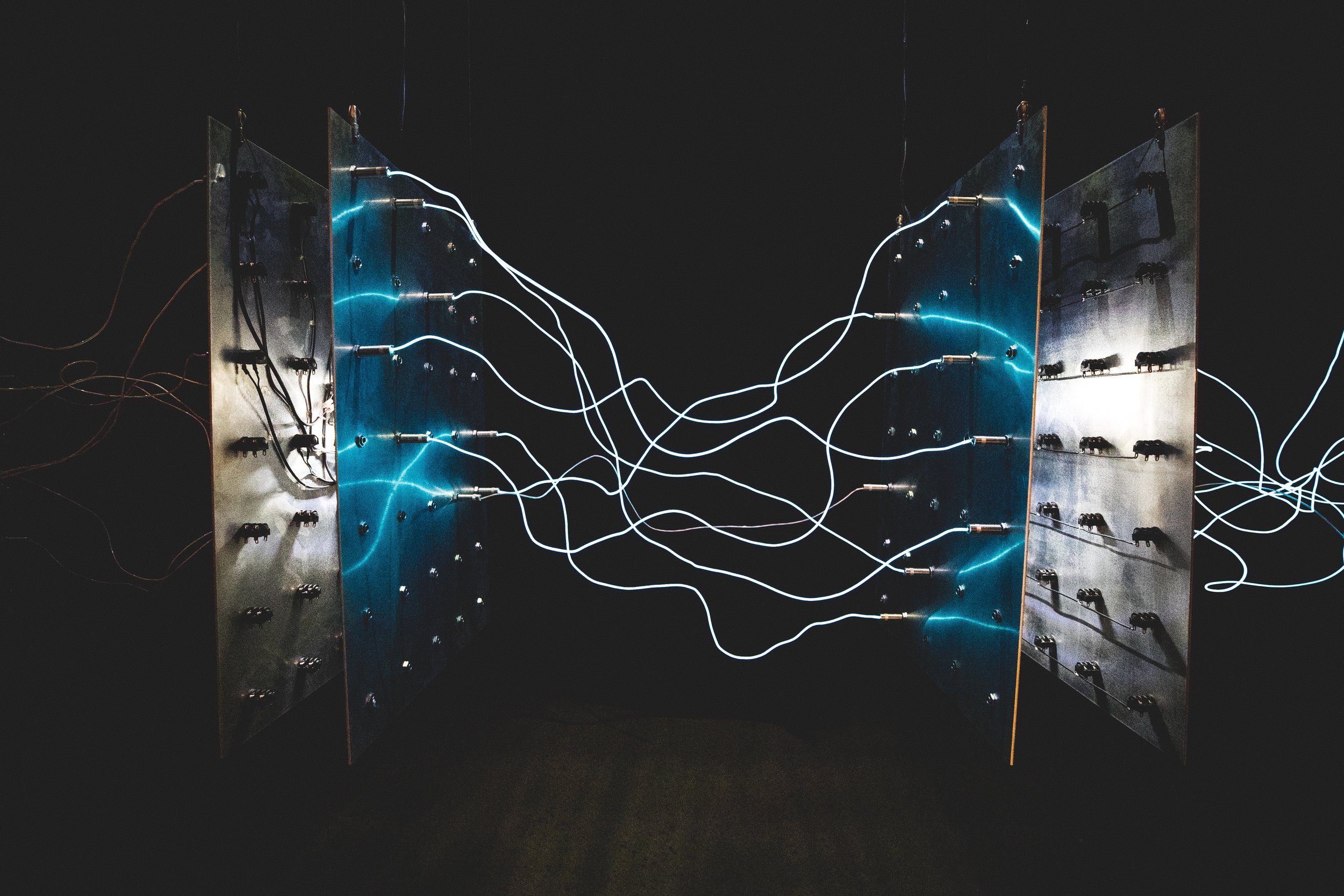Purification and Cleansing - Liberate your Nervous System
Jim Tarran
I always remember, as a younger yogin, reading B.K.S Iyengar talking about yoga being good for your nervous system. I hadn’t thought about yoga that way before I just knew it worked for me. One of the primary reasons that I kept coming back to yoga was the way I used to feel after class. The actual classes were a mixed affair. I remember a lot of sweating, struggling and clock watching. So at first it was definitely the way I felt afterwards that kept me coming back.
I felt ALIVE in a way that I had begun to lose touch with during the challenges of my time in secondary school and during the highs and lows of my fairly experimental teenage years.
Everything had a newness about it. I felt free in a way that was like a homecoming.
The yoga tradition has many overt references to cleanliness, purity and cleaning as well as a host of allusions to a pristine, original, fundamental, experience that exists somehow before, between or beneath our ordinary day to day perceptions.
Advaita texts like the Avadhūta Gīta hint at this fundamental experience that is, whole and undivided “Know the Self always to be everywhere, one and intercepted. I am meditator and the highest object of meditation. Why do you divide the Indivisible?” (I/12)
Non-Dual Śaiva sources talk of Awareness that is “free and independent” that is “the cause of the performance of everything” .
Buddhist texts make it clear that this essence or Self (or more correctly the ungraspable substratum designated with the Sanskrit term anatman ‘not-self’) is not something that is correlate with causes – it is not made or created or formed and therefore it is not something that can be earned, or gained, or produced.
The famous assertion of “neti, neti” by Yajnavalkya in the Bṛhadāraṇyakopaniṣat points to the same thing - whatever you say you are you are “not this, not this”.
Patañjali, in the well-known yoga sutra right at the beginning of the text after defining yoga as an experience delineated by its lack of attachment to movements in consciousness (PYS 1:2) goes on to say that “then the seer abides in one’s own (essential) form” (PYS 1:3).
The question is, if the fundamental foundation of our experience, which is inherently free and inherently pure is always there how come we miss it?
The foundational problem would appear to be universally understood in the Indic tradition albeit described in multifarious ways.
One does not see one’s essence because, although It is ever-present and always available, one’s attention tends to be drawn (in a manner whose entangled, complex tone indicates the presumption of a fundamental self-therein) to certain objects arising in consciousness.
The attaching to; thoughts, feelings, emotions, physical sensations that arise in consciousness means that one is attaching oneself to instability as self and what that produces drives a host of compulsive and desperate behaviours. This attachment is driven both by incorrect gnosis (mithya jñanam) and habituated tendencies (saṃskāra) and these habituated tendencies and the traits (vāsanā) that compel us to act are themselves products of the law of karma, which is an endless chain of action and reaction causing endless loops of compulsive behaviour spawning limitless fruits that cause more reactions in ceaseless rounds (saṃsāra).
If this attachment is habituated and largely unconscious what can be done? How can the nervous system be cleansed of habits and patterns that have taken so long to form?
This is where yoga comes in. Notwithstanding the concept of jnana-yoga or yoga of gnosis yoga’s defining quality as a movement within the Indic schools is one that recognises this fundamental problem and acts. Yoga utilises techniques that are affective in side-tracking us from our usual trigger-reaction cycle. In addition, through imprinting new impressions into the nervous system (such as new breathing patterns in pranayama and new physical shapes in āsana) yoga provokes the release and natural disentanglement (vairagyam)of nervous habits that would otherwise be running our nerves and therefore our breath, body and brain.
One of the most fundamental methods to negate or purify this karmic round is to not act. Not acting has many expressions most notably in the tapas movement - or austerity schools - which actively or passively challenge these compulsions, either by taking action in ways that are clearly challenging to one’s usual preferences or by abstaining from action.
Examples of these can be found in the Buddhist texts of The Pali Cannon, which in describing the teachings and settings of the Buddha’s life also describes various contemporary practitioners of the time. These include the bark-wearing Bāhiya and the famous practitioner and patron of the Jain religion Māhāvira who is sometimes represented standing up with ivy growing around him signifying the fact that he had been standing without moving for a long time. Even the well-known vṛkṣāsana (tree pose) has its roots in a practice where the yogin would stand on one leg for years on end. Less extreme, but still utilising the same principal, is seated meditation, where the practitioner will, as part of the practice, abstain from one’s normal reactive cycles for a sustained period. Even a regular MPY class will mean that for an hour or so the practitioner will not be free to just go with one’s normal habitual inclinations and drives.
Yoga techniques therefore recognise the need for a sort of skilful discombobulation. Many of yoga’s techniques, including the famous six actions (ṣaṭkarman) or cleansing techniques such as jala netī and nauli and kapalbhati change not just the mental view of things but the very direction of energy around one’s system and hence cleanse the nerves or energy channels (nāḍī śodhana). The Vijñāna-bhairava-tantra points out experiences that might occur in your normal life that inherently cause you to forget to run your programs such as disappearing into music or flavours or even wearing yourself out through exercise so that you don’t have the energy to run your programs or spontaneously silent states such as post orgasm or when you forget why you went into a room.
The point is to temporarily open a door to what our habits would be normally blind us from. In that moment of recognition when the yogins unconscious habits, which in a sense pollute the view, part like clouds, the yogin touches their essence self which immediately feels more real than the various forms of clinging (to gender, life story, familial conditioning…etc) did. This is the ultimate cleansing because just as if you were to drink pure water after having drunk polluted water all your life you would be less inclined to go back to the impure water afterwards.
The hilarious and insightful classic The Hitchhikers Guide to the Galaxy by Douglas Adams describes the whole problem of getting out of your own way and its solution to when discussing the art of flying:
“You must learn how to throw yourself at the ground and miss…one problem is that you have to miss the ground accidentally. It's no good deliberately intending to miss the ground because you won't. You have to have your attention suddenly distracted by something else … so that you are no longer thinking about falling, or about the ground, or about how much it's going to hurt if you fail to miss it…It is notoriously difficult to prise your attention away from these three things during the split second you have at your disposal. …If, however, you are lucky enough to have your attention momentarily distracted at the crucial moment by, say, a gorgeous pair of legs (tentacles, pseudopodia, according to phyllum and/or personal inclination), or by suddenly spotting an extremely rare species of beetle crawling along a nearby twig, then in your astonishment you will miss the ground completely and remain bobbing just a few inches above...”
Quotes
By passion for the “pairs of opposites,”
By those twain snares of like and dislike , Prince!
All creatures live bewildered, save some few.
— Bhagavad-Gita

